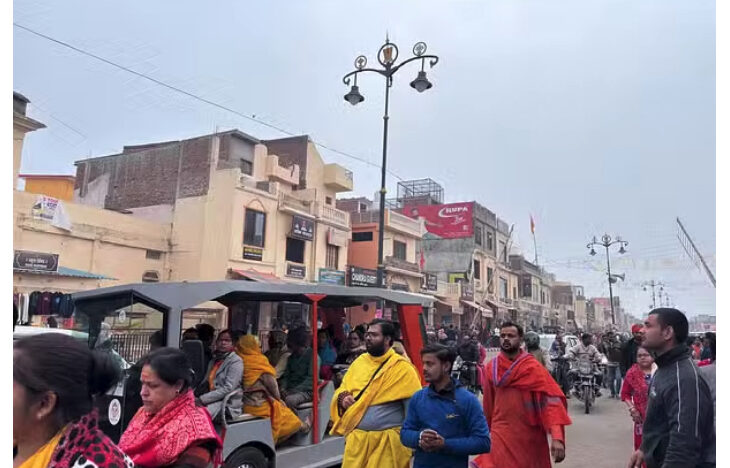AYODHYA, INDIA, January 1, 2025 (Swarajya, by Ankit Saxena): The date 22 January 2024 marked the historic opening of the Ram Temple in Ayodhya. The temple trust, Ayodhyavasis, and the entire nation are now preparing to celebrate its first anniversary in January 2025. The temple has come to symbolise not only faith and devotion for millions of people but also Ayodhya’s transformation over the past year. The town has undergone significant economic and infrastructural changes, driven by the temple’s construction. These include enhanced connectivity, improved hospitality services, and numerous civic amenities, positioning Ayodhya as a key destination in India and on the global stage. Major projects include the revamped Ayodhya Dham railway station, widened roads such as the Ram Path and Dharma Path, and a new international airport. A year ago, during the making of this temple town, Swarajya was on the ground to cover the anticipation surrounding the Ram Mandir’s opening and its impact on Ayodhya’s residents. We saw the development surge that brought new hotels, expanded businesses, and facilities to accommodate the growing influx of visitors. However, the development arc also involved the demolition of several local properties, resulting in mixed feelings among the affected communities. Still, most people remained optimistic, focussing on the economic opportunities the temple promised.
A year later, Swarajya revisited Ayodhya to document the changes that have unfolded, the challenges faced, the experiences of residents and visitors, the town’s economic progress, and whether Ayodhya has lived up to people’s aspirations. This rapid development has also attracted many youths, who have returned to start their own ventures. Most locals view these changes positively, attributing them to the temple and the global attention it has garnered. However, the boom has not been without challenges. “New issues and gaps now demand attention from authorities, the government, and local residents,” says Karthikey, a tour operator who launched Ayodhya Darshans to promote religious tourism in India. “With the temple’s opening, people across Ayodhya began building hotels and related businesses. But much of this growth has only benefitted areas within a 1.9 mile radius of the temple,” he notes. Those who invested in other parts of the district have found growth slower than expected, leaving several newly constructed hotels and facilities unused. Owners are now searching for alternative uses or seeking outside investors to manage these properties. The uneven spread of benefits has caused frustration among some locals who anticipated immediate returns. “People need to understand that this growth will take time to spread and gradually benefit the wider region,” Karthikey explains. This disparity also contributed to a surprising political outcome — the Bharatiya Janata Party (BJP) losing the town’s Faizabad Lok Sabha constituency, he adds, reflecting on how expectations and realities have shaped the community’s sentiment.
Much more at source.
https://swarajyamag.com/reports/one-year-after-the-ram-mandir-has-life-in-ayodhya-improved-a-ground-report#:~:text=The%20people%20of%20Ayodhya%20are,development%20driven%20by%20the%20temple.
A daily summary of world news for Hindus and non-Hindus alike

